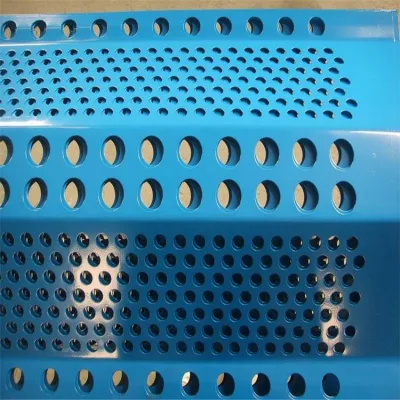The Effectiveness and Importance of Freeway Sound Barriers
In today's fast-paced world, the expansion of urban areas and the construction of highways have led to increased noise pollution, which can have detrimental effects on the quality of life for those living nearby. One solution that has emerged to combat this issue is the installation of sound barriers along freeways. These structures play a crucial role in mitigating the impact of traffic noise, thereby enhancing the comfort and well-being of communities adjacent to high-traffic roadways.
Sound barriers, often made from concrete, earth mounds, or a combination of materials, are designed specifically to deflect, absorb, or reflect sound waves generated by vehicles on the freeway. The effectiveness of these barriers can be attributed to several factors, including their height, design, and the distance from the noise source. Typically, sound barriers must be high enough to shield lower-lying areas and wide enough to cover the sound path. The taller and denser the barrier, the more effective it generally is at reducing noise levels.
The primary purpose of freeway sound barriers is to lower the decibel levels that reach residential areas, schools, and parks located near busy highways
. Studies have shown that properly designed barriers can reduce noise levels by 5 to 15 decibels, which can translate to a significant difference in perceived loudness for residents. To put this into perspective, a reduction of 10 decibels is often perceived as halving the noise level, demonstrating the impact that sound barriers can have on community tranquility.Beyond their noise-reducing capabilities, sound barriers can also serve additional purposes. They often act as visual screens, blocking the sight of heavy traffic from neighboring homes and enhancing the aesthetic appeal of the landscape. By using natural materials and integrating greenery into the design, sound barriers can blend seamlessly with the surrounding environment, providing a more pleasant view for residents. Some innovative designs even incorporate vegetation, which can further absorb sound and improve air quality.
freeway sound barrier

In addition to residential benefits, sound barriers can also foster healthier community interactions. High noise levels are linked to various health issues, including stress, sleep disturbances, and heart problems. By effectively reducing noise pollution, freeway sound barriers can contribute to a healthier living environment, encouraging outdoor activities and community gatherings without the constant interference of traffic noise.
The construction and maintenance of sound barriers, however, are not without challenges. Cost is a primary concern, as the installation of sound barriers can require significant investment. Funding often comes from government budgets or local authorities, and balancing this expense with other infrastructural needs can be difficult. Additionally, there are potential environmental implications to consider, as the construction of barriers may disrupt local ecosystems or wildlife habitats. It is essential for planners and engineers to carefully assess these factors during the project planning stages.
Moreover, the effectiveness of sound barriers can diminish over time due to wear and tear or the growth of surrounding vegetation. Regular maintenance is necessary to ensure that these structures continue to perform optimally. Communities must prioritize the upkeep of existing barriers while also considering the construction of new ones as urban areas continue to expand.
In conclusion, freeway sound barriers represent a vital intervention in the realm of urban planning and public health. Their ability to reduce noise pollution, enhance visual aesthetics, and promote healthier living conditions makes them an essential consideration for communities adjacent to busy roadways. As urbanization and traffic continue to increase, the thoughtful implementation and maintenance of sound barriers will play an important role in fostering peaceful and healthy environments for residents. Through a balanced approach that considers both the benefits and challenges of these structures, we can pave the way for a quieter, more harmonious coexistence between urban infrastructure and community well-being.
-
Why Galvanized Trench Cover Steel Grating Resists Corrosion
NewsJul.10,2025
-
The Versatility and Strength of Stainless Expanded Metal Mesh
NewsJul.10,2025
-
Load Calculations in Steel Grating Platforms
NewsJul.10,2025
-
Keeping Pets and Kids Safe with Chicken Wire Deck Railing
NewsJul.10,2025
-
Hole Diameter and Pitch for Round Perforated Metal Sheets
NewsJul.10,2025
-
Aluminium Diamond Mesh in Modern Architecture
NewsJul.10,2025
Subscribe now!
Stay up to date with the latest on Fry Steeland industry news.

